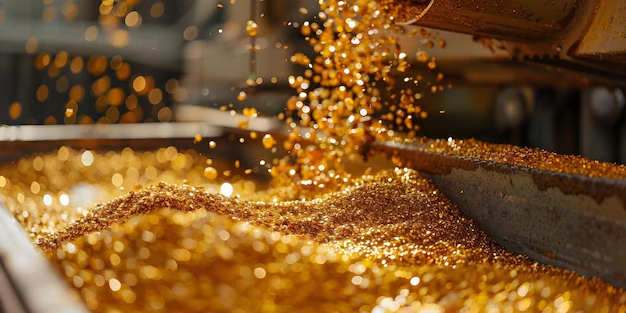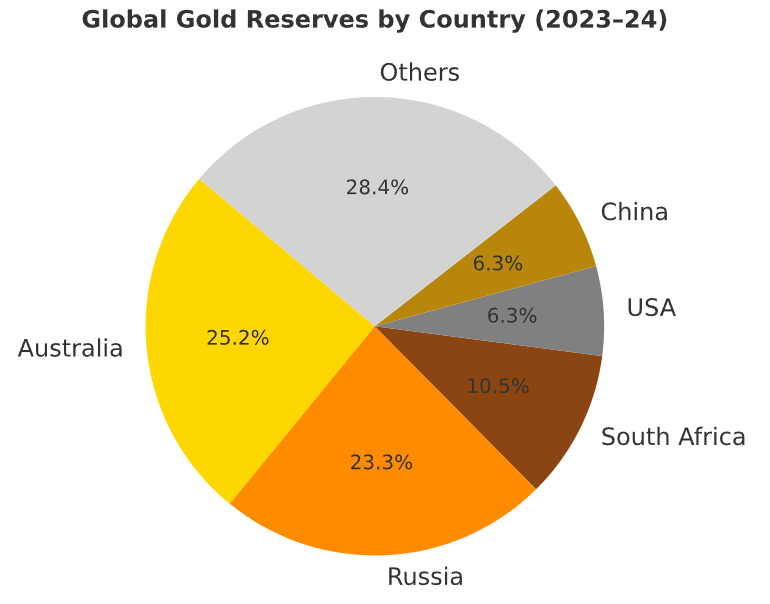
For centuries, gold has been admired as a symbol of wealth, security, and beauty. But today, its significance extends far beyond tradition. With rising demand, shrinking supply, and irreplaceable industrial value, gold is no longer just a commodity; it’s the foundation of the future. And the way we mine and process it will determine how bright its future truly is.
A Market Shaped by Tradition and Technology
The global gold market is vast and multifaceted. Jewellery continues to dominate consumption, reflecting the cultural and aesthetic significance of gold worldwide. Simultaneously, it remains a secure investment, holding strong relevance in an uncertain economic scenario.
But what’s often overlooked is gold’s vital role as an industrial metal. From circuit boards and connectors to advanced medical devices, gold is essential. In fact, the electronics industry accounts for nearly 80% of the gold used in technology. As digital transformation accelerates and demand for high-performance devices increases, industrial demand for gold is expected to rise.
Rising Demand, Shrinking Supply
Here lies the paradox: just as demand for gold accelerates, supply is tightening.
- Ore grades are declining.
- Exploration of shallow, high-yield deposits is nearing exhaustion.
- Extraction costs are rising.
- Environmental and regulatory requirements are becoming more stringent.
For the mining industry, the challenge is clear: produce more with less—higher recovery, lower emissions, and sustainable practices.
Global Mines & Reserves
Some of the world’s largest mines shape today’s global gold supply:
- Nevada Gold Mines, USA – The world’s largest gold complex, producing over 3 million ounces annually.
- Muruntau, Uzbekistan – Holding ~71 million ounces, among the biggest open-pit operations globally.
- Grasberg, Indonesia – A copper-gold powerhouse with ~26 million ounces.
- Olimpiada, Russia – One of the largest deposits with ~21 million ounces.
Other key contributors include Pueblo Viejo (Dominican Republic), Kibali (DRC), Lihir (PNG), Cadia and Boddington (Australia), and Canadian Malartic (Canada).

Exploration Frontiers: New Gold on the Horizon
While established deposits are under pressure, discoveries are opening up new possibilities worldwide
- China’s Wangu Gold Field – A “supergiant” discovery with >1,000 tonnes of high-grade ores, estimated at $83 billion in value.
- Finland’s Karelian Gold Line – Promising zones of new high-grade gold across northern Europe.
- Australia’s Gympie Region – Modern tech like LiDAR is reviving historic sites, revealing hundreds of old shafts and zones.
- India’s Karnataka Belt – New exploration licenses aim to uncover gold and copper potential, positioning India as a future producer.
- South Dakota, USA – Renewed exploration debates highlight both economic prospects and environmental sensitivities.
Smarter Processes for a Smarter Future
Meeting rising demand will depend not only on discoveries but also on advanced process solutions that maximize recovery and minimize impact:
- Efficient Grinding & Milling to optimize particle size for maximum recovery.
- Advanced Separation Technologies that improve precision in extraction and reduce reagent use.
- Water & Waste Management Systems to cut water consumption, reuse process water, and reduce tailings.
- Automation & Digitalization for predictive maintenance, AI-driven monitoring, and real-time process optimization.
Such technologies not only boost productivity but also align with responsible and sustainable mining practices.
Conclusion
The modern story of gold is not just about digging deeper—it’s about producing smarter. The companies that adopt advanced process solutions today will define the future of this extraordinary metal tomorrow.
Author: Sonal Juyal
No responses yet